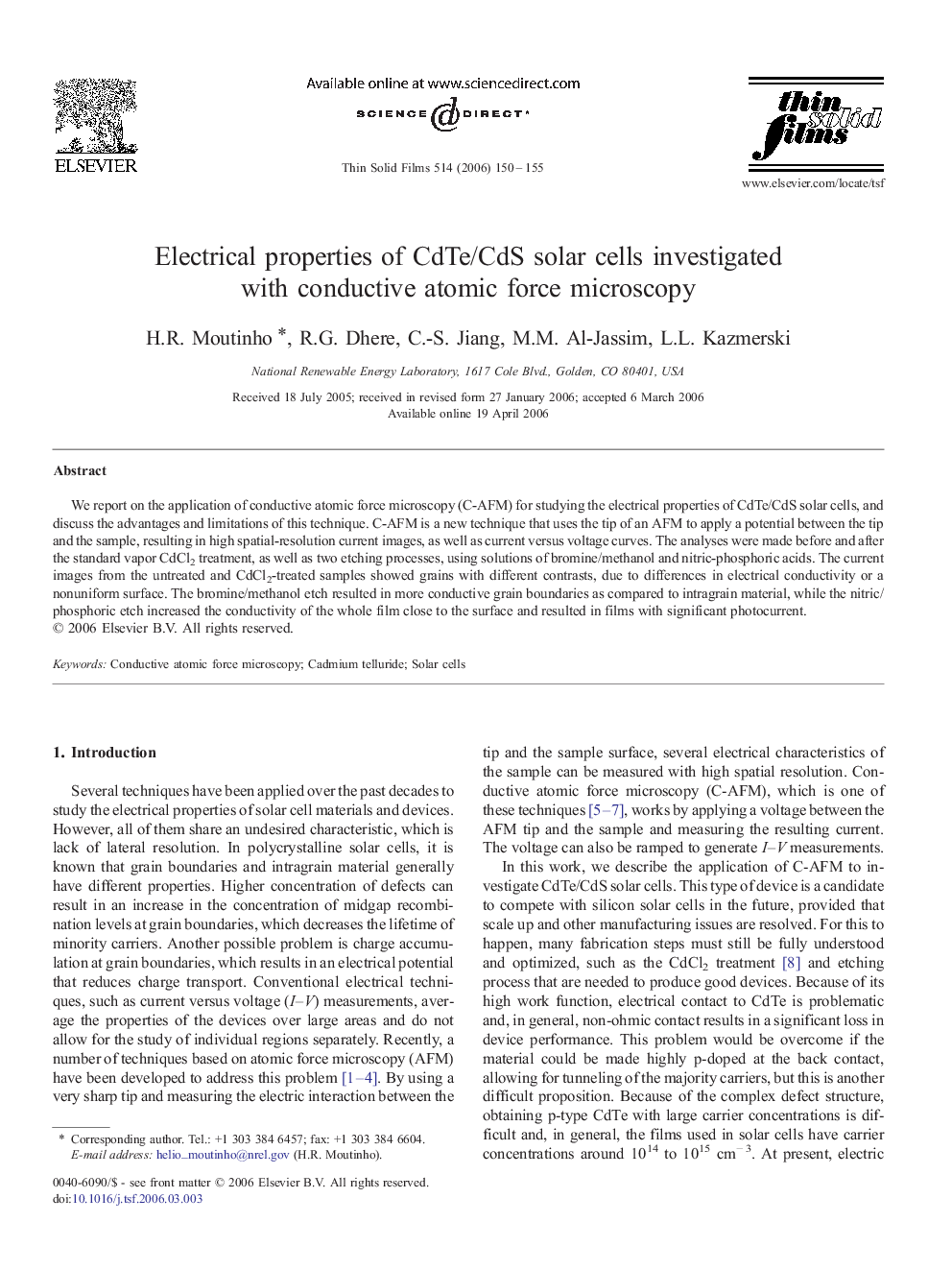| Article ID | Journal | Published Year | Pages | File Type |
|---|---|---|---|---|
| 1675938 | Thin Solid Films | 2006 | 6 Pages |
We report on the application of conductive atomic force microscopy (C-AFM) for studying the electrical properties of CdTe/CdS solar cells, and discuss the advantages and limitations of this technique. C-AFM is a new technique that uses the tip of an AFM to apply a potential between the tip and the sample, resulting in high spatial-resolution current images, as well as current versus voltage curves. The analyses were made before and after the standard vapor CdCl2 treatment, as well as two etching processes, using solutions of bromine/methanol and nitric-phosphoric acids. The current images from the untreated and CdCl2-treated samples showed grains with different contrasts, due to differences in electrical conductivity or a nonuniform surface. The bromine/methanol etch resulted in more conductive grain boundaries as compared to intragrain material, while the nitric/phosphoric etch increased the conductivity of the whole film close to the surface and resulted in films with significant photocurrent.
